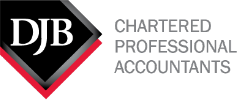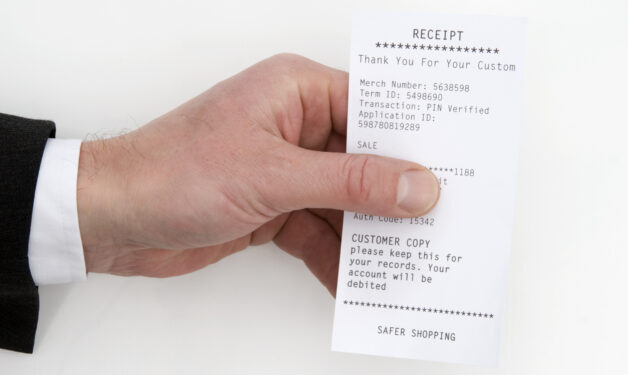Executive summary
Middle market real estate taxpayers should assess the impact of EIFEL rules on their investment structures to avoid denied interest expenses or penalties. Areas of focus may be the use of partnerships in real estate development or investment, non-residents with Canadian real estate, and sector-specific exemptions.
Middle market taxpayers in the real estate (RE) sector will need to understand the impact of Excessive Interest and Financing Expense Limitation (EIFEL) rules on their investment or development structures. Failing to model the outcome of EIFEL could lead to diminished returns on investment in the form of denied interest expenses, or penalties under the Act for non-compliance.
The key focal points of EIFEL for taxpayers operating in the RE sector should be the impact of EIFEL on partnerships, non-residents with Canadian real estate, and targeted EIFEL exemptions that are tied to the RE sector.
What are the EIFEL rules?
Initially introduced in Budget 2021, EIFEL rules are now effective for tax years of corporations and trusts starting on or after October 1, 2023. Broadly, EIFEL aims to restrict a taxpayer’s deduction for interest and financing expenses (IFE), net of interest and financing revenues (IFR), to a fixed ratio of earnings before interest, taxes, depreciation, and amortization (EBITDA), referred to in the Income Tax Act (Act) as adjusted taxable income (ATI). This fixed ratio is 30% of ATI, subject to a 40% ratio that applies for tax years that began after September 30th and before January 1, 2024.
EIFEL and Partnership Structures
Partnership structures are commonly used in RE investment or development due to their flexibility in structuring agreements, ease of resource pooling, and flow-through treatment of income, expenses, and certain tax credits. While EIFEL does not apply directly to partnerships, partners that are in scope of the rules will need to communicate and model the application of EIFEL, particularly where a partnership or its members will be leveraged with debt to facilitate RE activities.
A partnership is not a taxpayer for the purpose of EIFEL. Instead, the IFE and IFR of a partnership are attributed to partners who are corporations or trusts. The share of partnership IFE and IFR is based on the taxpayer’s share of each source of income or loss of the partnership. Where a partner determines that it will have a denied percentage of IFE, this will generally be applied to their share of IFE from a partnership and cause an income inclusion at the partner level in the amount denied (similar to the operation of thin-capitalization rules). The partnership itself will not suffer EIFEL consequences. Further, in respect to sharing IFE, certain members of a partnership may be subject to ‘at risk’ rules, which generally limit deductions to the extent a partner has invested into the partnership or earned income from the partnership. The amounts that are not included in a non-capital loss of a taxpayer because of the ‘at risk’ rules will be excluded from a partner’s EIFEL computation.
Most mitigation strategies for EIFEL will be considered at the taxpayer level, that is, the corporation or trust that is a member of a partnership. However, an election can be filed to exclude debt or lease financing amounts from the computation of EIFEL, if the debt or financing arrangement is between members of the same group for the purpose of EIFEL (generally, related or affiliated within the meaning of the Act). When a partnership is a payer or payee in these circumstances, the rules permit partnerships and their members to benefit from this election to effectively exclude a lending or lease financing arrangement from the scope of EIFEL. However, this election requires that all members of the partnership are part of the same EIFEL group as the lender or borrower, or for a partnership counterparty, each member of the lender or borrower. Additionally, all member of the partnership must be taxable Canadian corporations or a partnership which in turn is only made up of taxable Canadian corporations.
Non-residents with Real Property in Canada
Canadian residents paying rent to non-resident real property owners must withhold 25% of the payment and remit it to the CRA. Without further action, this becomes the non-resident’s final tax liability in Canada in respect to that payment. The Act allows non-resident owners of Canadian real estate to be taxed on net rental income rather than gross income if they file a section 216 return for the relevant year. The non-resident and payer can also elect for the payer to withhold on a net basis based on projected expenses, which may have cash-flow benefits for the non-resident.
For US-resident corporations or trusts that have real property in Canada and file under section 216 to be taxed on a net basis, the main exclusions from the EIFEL rules may not apply. Non-resident corporations earning income from property in Canada do not qualify. This means that section 216 filers with IFE will need to track EIFEL balances yearly to determine IFE that is denied, or available carryforward deduction capacity under EIFEL. For US middle market taxpayers that have Canadian property portfolios that are leveraged with debt, it will be important to model the application of EIFEL and explore mitigation strategies.
Multi-family and P3 Exemptions
Entities subject to EIFEL rules can exclude certain IFE amounts related to the RE sector from the IFE denial calculation. For investment funds with significant RE holdings, the benefits of relying on these exemptions are compounded. Presently, the relevant exemption is for third party IFE that is incurred in the context of public-private partnership (P3) infrastructure projects. Generally, corporations, trusts, and partnerships that act as borrowers while developing property that is owned by a public sector authority (PSA) can access this exemption, if the PSA is reasonably considered to bear these expenses.
Additionally, a focal point of Canada’s Budget 2024 was housing affordability. The government proposed a new EIFEL exemption applicable to the RE sector that is poised to be available until January 1, 2036. Taxpayers will be entitled to elect to exclude arm’s length interest from their EIFEL computation related to building or acquiring new purpose-built rental housing. This exemption is not yet passed into law but should represent welcome relief for RE developers of multi-family homes in Canada.
EIFEL for Real Estate
Middle market taxpayers in the RE sector should proactively assess and model the impact of the EIFEL rules on their investment or development structures. Of particular significance to RE developments are the impact of EIFEL on partnership structures, non-residents with Canadian real estate, and targeted exemptions that are tied to the RE sector.
This article was written by Simon Townsend, Mamtha Shree, Neil Chander, Nicole Lechter and originally appeared on 2024-09-16. Reprinted with permission from RSM Canada LLP.
© 2024 RSM Canada LLP. All rights reserved. https://rsmcanada.com/insights/tax-alerts/2024/optimize-your-real-estate-structures-for-eifel.html
RSM Canada LLP is a limited liability partnership that provides public accounting services and is the Canadian member firm of RSM International, a global network of independent assurance, tax and consulting firms. RSM Canada Consulting LP is a limited partnership that provides consulting services and is an affiliate of RSM US LLP, a member firm of RSM International. The member firms of RSM International collaborate to provide services to global clients but are separate and distinct legal entities that cannot obligate each other. Each member firm is responsible only for its own acts and omissions, and not those of any other party. Visit rsmcanada.com/about for more information regarding RSM Canada and RSM International.
The information contained herein is general in nature and based on authorities that are subject to change. RSM Canada LLP guarantees neither the accuracy nor completeness of any information and is not responsible for any errors or omissions, or for results obtained by others as a result of reliance upon such information. RSM Canada LLP assumes no obligation to inform the reader of any changes in tax laws or other factors that could affect information contained herein. This publication does not, and is not intended to, provide legal, tax or accounting advice, and readers should consult their tax advisors concerning the application of tax laws to their particular situations. This analysis is not tax advice and is not intended or written to be used, and cannot be used, for purposes of avoiding tax penalties that may be imposed on any taxpayer.










